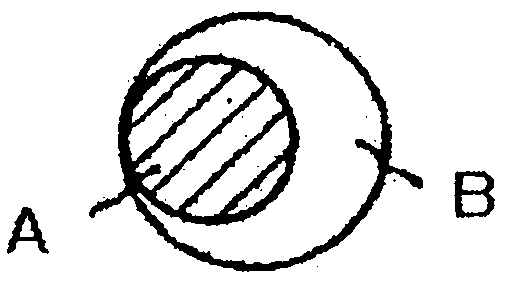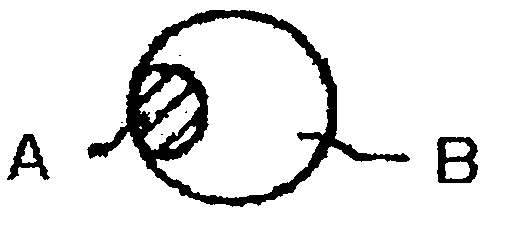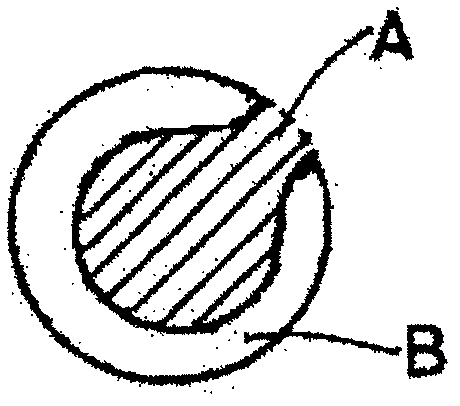Composite fiber for stockings
A composite fiber and fiber technology, applied in fiber processing, socks, applications, etc., can solve problems such as reduced washability, and achieve the effects of high productivity, excellent water absorption, and high soft texture
- Summary
- Abstract
- Description
- Claims
- Application Information
AI Technical Summary
Problems solved by technology
Method used
Image
Examples
Embodiment 1
[0071] Separately melted polyether block amide copolymer (Pebax MV1074 manufactured by Arkema) and nylon 6 (manufactured by Mitsubishi Chemical Corporation) were spun into the conjugate fiber at an area ratio of copolymer to nylon 6 of 50 / 50 ( The exposed angle is 33.5°), the cross section of the composite fiber is as follows figure 1 As shown, then take out the undrawn yarn with a monofilament fineness of 35 dtex.
[0072] The undrawn yarn was drawn at room temperature at a drawing speed of 800 m / min and a drawing ratio of 3.28 times. The drawn yarn was wound into a weft bobbin at a winding hardness ranging from 80 to 75, thereby obtaining a 22 dtex / 2f conjugate fiber for socks.
[0073] No crimp was observed in the appearance of the bobbin of the conjugated fiber, but helical crimping was observed when the fiber was detached from the bobbin for 1 to 2 minutes. The crimp rate is 62%.
[0074] The composite fiber was woven into a sock using a 4-pass seamless sock weaving m...
Embodiment 2
[0079] Socks were prepared in the same manner as in Example 1, except that the total fineness / filament count was changed to 19 dtex / 2f.
[0080] The crimp rate of the obtained conjugated fiber was 52%.
[0081] The resulting socks were well dyed and had excellent clarity and touch. The conjugate fiber according to the present invention can be used for knitting socks without any crimping treatment, and thus realizes high productivity due to its own crimping property.
PUM
 Login to View More
Login to View More Abstract
Description
Claims
Application Information
 Login to View More
Login to View More - R&D
- Intellectual Property
- Life Sciences
- Materials
- Tech Scout
- Unparalleled Data Quality
- Higher Quality Content
- 60% Fewer Hallucinations
Browse by: Latest US Patents, China's latest patents, Technical Efficacy Thesaurus, Application Domain, Technology Topic, Popular Technical Reports.
© 2025 PatSnap. All rights reserved.Legal|Privacy policy|Modern Slavery Act Transparency Statement|Sitemap|About US| Contact US: help@patsnap.com



